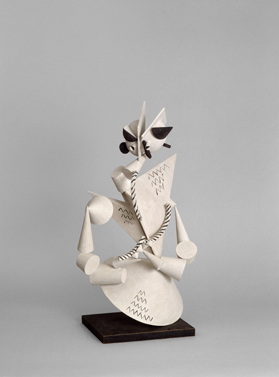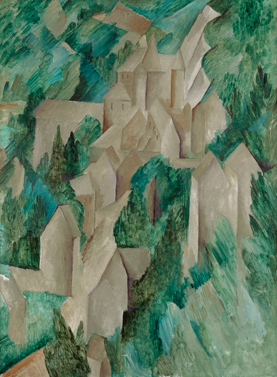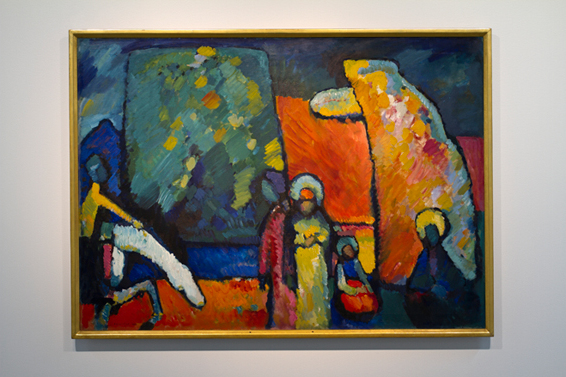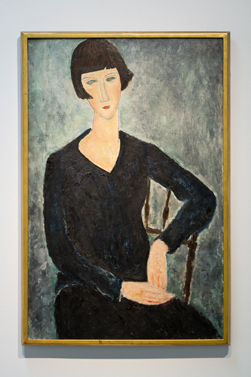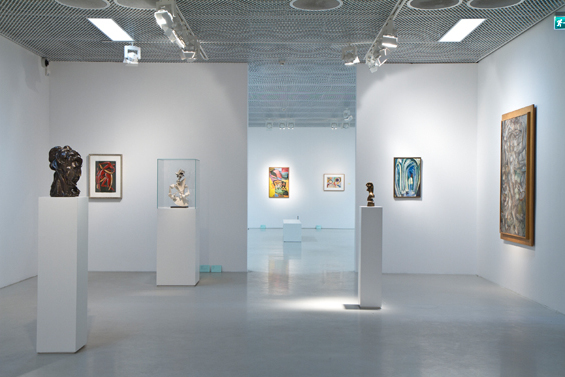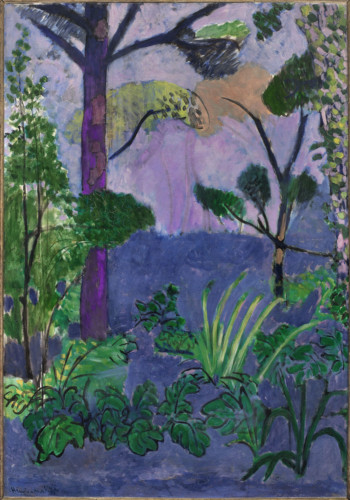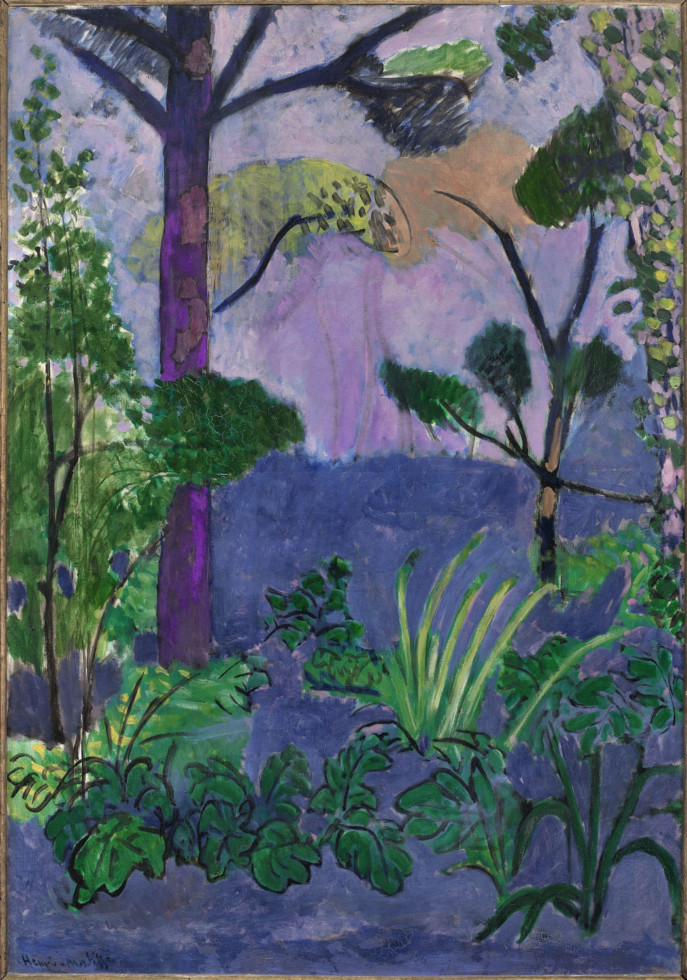
Henri Matisse, Marockanskt landskap, 1912 © Succession H Matisse/BUS 2011
Early Modernism: 1900–1920
From The Moderna Museet Collection
19.3 2011 – 2.10 2011
Malmö
Paris was still the European capital of painting, attracting young artists from all over the continent who sought to study, encounter the new art and meet other artists. Solo exhibitions of Cézanne, van Gogh and Gauguin in the early 1900s, introduced many of them to the inspiringly colourful and expressive style of post-impressionism. Other young artists discovered non-European art that had been brought back to Paris from the colonies and by explorers and was now exhibited in ethnographic and anthropological museums. Masks and sculptures from Africa, Oceania and South America, which had formerly not been regarded as art, now made a deep impression on artists and opened up to new expressions in art.
Two movements stand out among the great variety of expressions and styles that arose during this period: expressionism, based on the qualities and potential of colour, and cubism, based on form. Both movements can be said to have originated in Paris, and both are prodigiously represented in the Moderna Museet collection.
In the decade leading up to the First World War, both French and German artists began, independently of one another, to paint with strong, pure colours. In France, these artists were called Les Fauves, and in Germany one group called themselves Die Brücke, and another Der Blaue Reiter. These artists are also known collectively as expressionists.
Fauvism is commonly regarded as the first real avant-garde 20th century movement. It was an amorphous group of artists around Henri Matisse, which only existed between 1904 and 1907. When Matisse, Maurice de Vlaminck and Georges Rouault exhibited at the autumn salon in Paris in 1905, their strong, bold colours prompted the critics to dub them the wild beasts “les fauves”. The focus for the fauvists was on colour as a form of expression in its own right, and they also departed from the conventional one-point perspective.
Matisse travelled many times to North Africa, where he was inspired by Oriental pattern designs, with brightly-coloured stylised plant ornamentation in decorative compositions. In 1908, he started an art school, where he taught a rapidly growing class of young artists. Many of his students were from Scandinavia. Isaac Grünewald and Sigrid Hjertén were two of his most famous Swedish students. In Isaac Grünewald’s portrait of his son Ivan by the armchair, it is easy to discern traces of Matisse’s ornamental lines and free treatment of colour. Matisse’s influence is also evident in Sigrid Hjertén’s The Red Blind. But Hjertén found her own style and abandoned safe decorativeness for wild, steep perspectives and naked, twisted female bodies to convey a sense of claustrophobia and looming danger.
In 1905, a group of German artists in Dresden formed Brücke (The Bridge). By emphasising unity between man and nature, they sought authenticity. They also intentionally eschewed spatial depth, proportion, perspective and realistic colouring, using strong colours to convey their impressions of the harsh, pressured social conditions created by industrialism. Ernst Ludwig Kirchner wrote the groups manifesto, and in 1908, Kirchner, Erich Heckel and Karl Schmidt-Rotluff exhibited their work together with the fauvists in Dresden. Having painted mostly nudes in Dresden, Kirchner moved to Berlin, where he began painting the urban landscapes that are now among the most famous German expressionist works.
In 1911, Wassily Kandinsky published his Concerning the Spiritual in Art in Munich, presenting a new programme for painting: a resounding cosmos of freely flowing colours and shapes springing from inner necessity. Kandinsky strove to visualise an inner, spiritual world through art, and laid the foundations for abstract expressionist art at around this time. Strongly influenced by music, he called his paintings improvisations and compositions.
Parallel with these expressionist strivings, a more formal style was developing within European painting. The origins of cubism can be traced to Cézanne’s late works with their muted palette and fragmented perspective, along with his attempts to reduce natural shapes into cylinders, spheres and cones. Picasso and Braque explored formal issues concerning the structure of the image, and in the process they dissolved the renaissance ideal of a uniform pictorial space based on the one-point perspective. Both artists closed the traditional pictorial space and emphasised the surface, the two-dimensional plane.
Cubism can be seen as a radical departure from European painting and its 500-year-old tradition of realistic depiction. The first phase of cubism, analytical cubism, was both revolutionary and influential, even though it only lasted a couple of years, approximately 1907-1911, and was developed by two artists who collaborated closely. The subsequent phase, synthetic cubism (ca 1912-1919), involved other artists, including Juan Gris. In this second stage, other materials and surface textures were also introduced, and the collage became a significant medium. Picasso, Alexander Archipenko and Henri Laurens were among the first to apply cubist ideas also to sculpture.
The exhibition is produced by Moderna Museet Malmö.
Curator: Magnus Jensner

